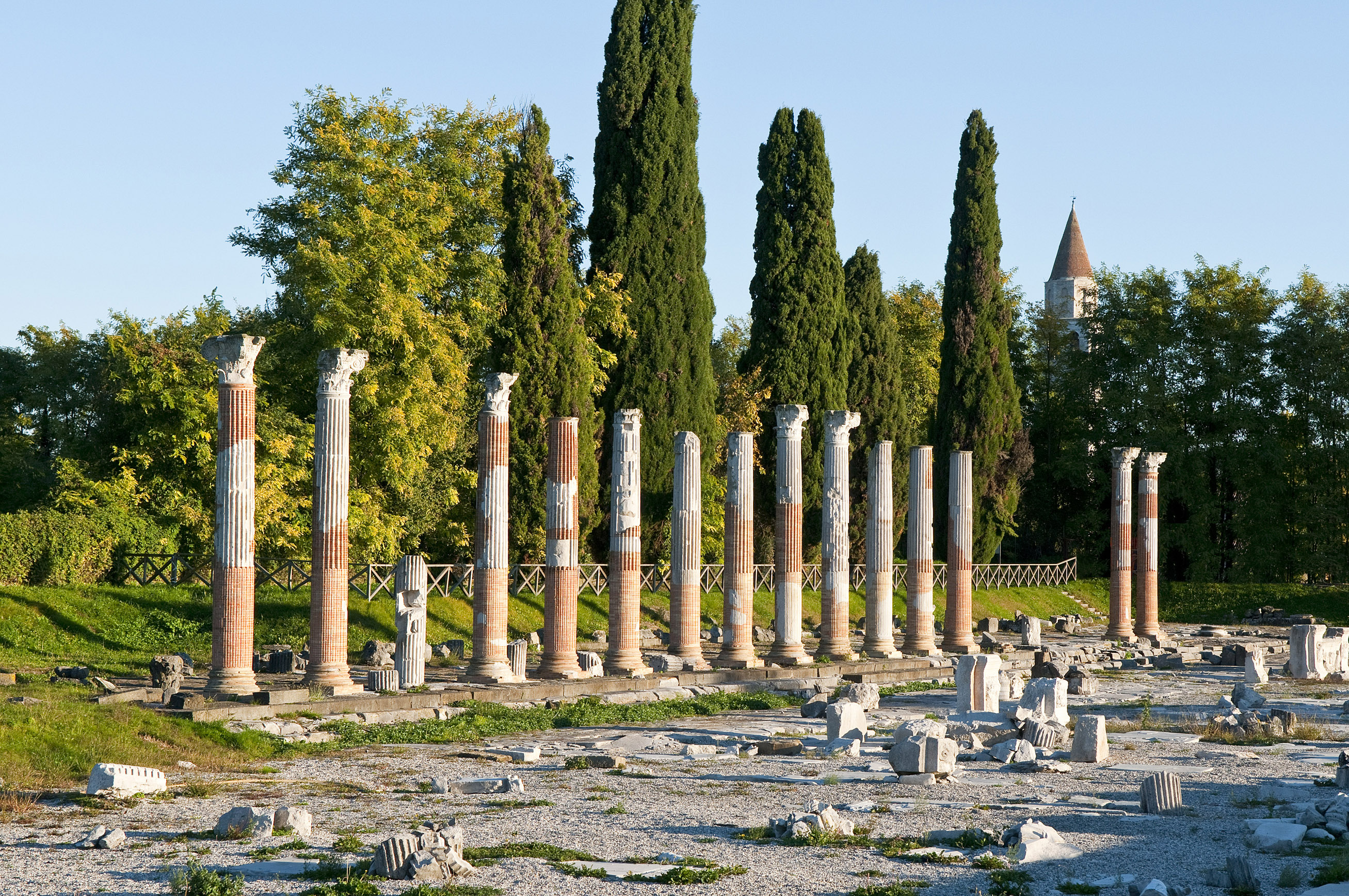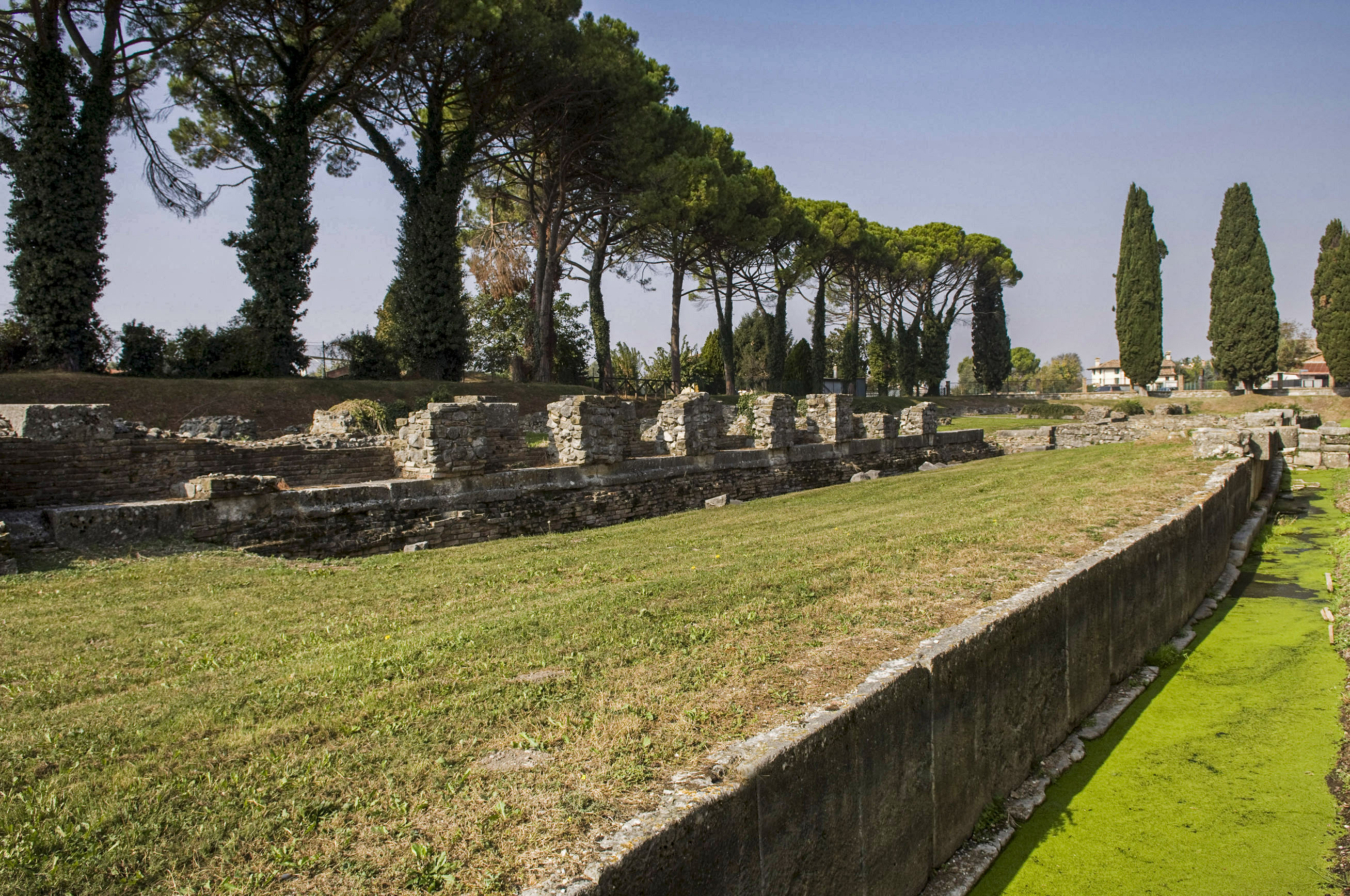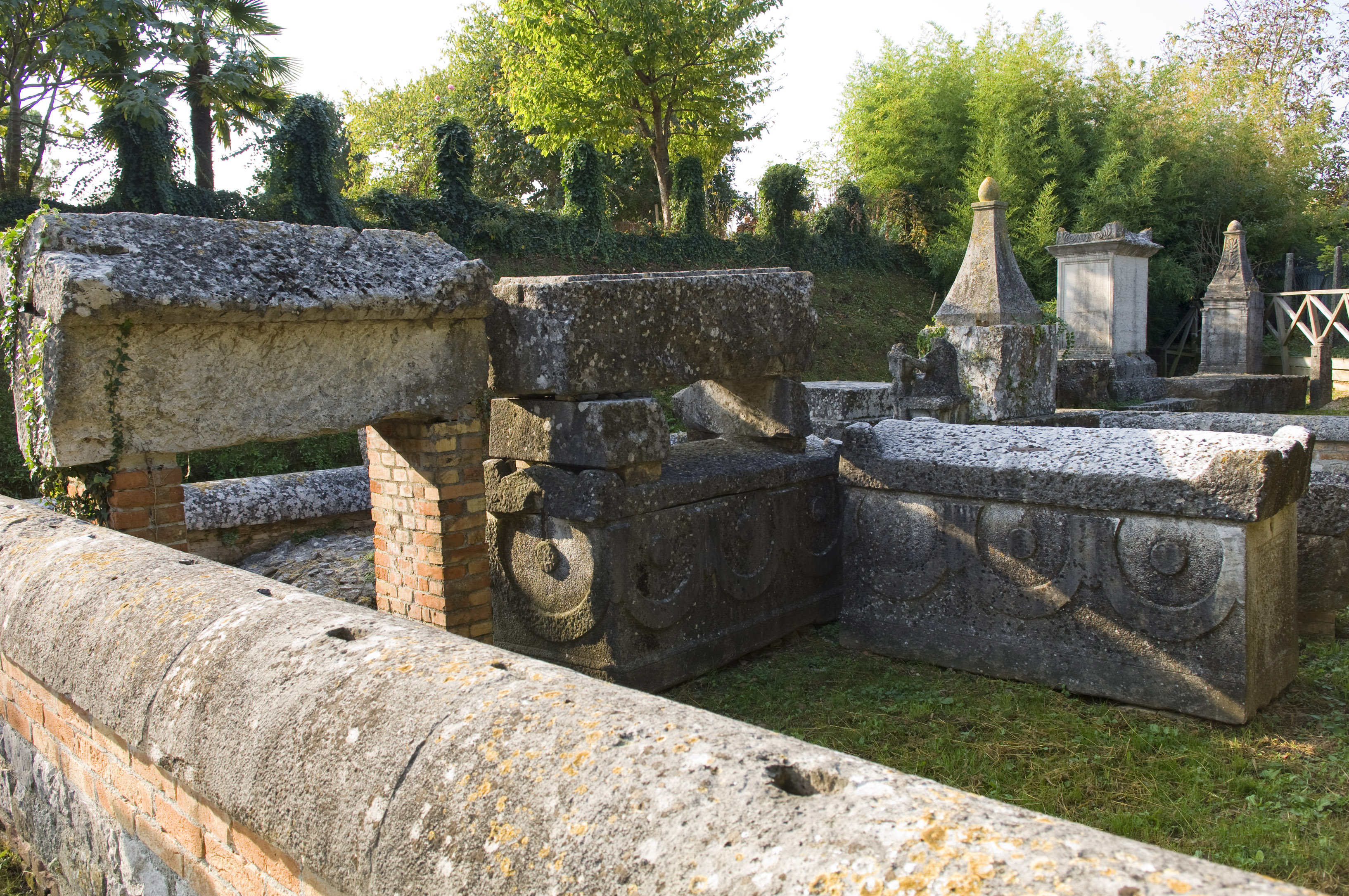AQUILEIA
PATRIMONIO DELL'UMANITÀ
sabato 3 gennaio 2026
Roman Aquileia: public buildings
Discovering the places where public life took place in Roman times.
The Forum, the beating heart of the city's economic, political, administrative and social life, the River Port, the Tomb are some unmissable stops on a journey to discover the ancient Roman colony.
The soul of Roman Aquileia is all enclosed in the Forum, the beating heart of the city's economic, political, administrative and social life. It could start from this square, surrounded by public buildings as early as the 2nd century BC. the fascinating itinerary to discover this archaeological site that still today captivates the traveler with its moving beauty.

The columns of the Court Square, Archeological Area of Aquileia | Photo: © Gianluca Baronchelli
The Forum, soul of the ancient city
The forum found space in this area immediately after 181 BC, the year in which Aquileia was deduced as a Roman colony. Today anyone who visits the ancient city is enchanted by this important monument with its 15 columns, repositioned and rearranged during the restoration of the 1930s, which rise towards the sky. Those that have survived to this day belong to the eastern arm of the portico. The composite capitals, in Aurisina limestone like the stems and bases, date back to the late age of the Antonine emperors (about 170-180 AD). In this which represented the civil heart of the city, the place of confrontation, discussion and socialization, the people of Aquileia met to discuss politics, but also to discuss economic and administrative issues. 142 meters long and 56 wide, the square was entirely paved with slabs of Aurisina limestone, (a sedimentary rock extracted in the quarry basins of the Carso Triestino, in the municipality of Duino-Aurisina), dating back to the Julio-Claudian phase of the forum (before mid 1st century AD), replaced, in some cases, over time, with reused materials. Under the arcades of the Forum, which surrounded the square on at least three sides, we would once have heard the buzz coming from shops (such as the one that sold fishing hooks). The progressive decay and abandonment of the Forum begins at the end of the fifth century and continues until, with the construction of the Byzantine Walls, which took place after 552, this area does not begin to become an out-of-town, abandoned and swampy area.

Ruins of the Warehouses near the River Port, Archeological Area of Aquileia | Photo: © Gianluca Baronchelli
The River Port 
Ruins of the Warehouses near the River Port, Archeological Area of Aquileia | Photo: © Gianluca Baronchelli
To the east, between the walls and the banks of the Natisone and Torre (48 meters away from each other), the first phase of monumentalization of the Aquileia canal port takes place.
The River Port is one of the best preserved examples of a port structure in the Roman world. It is part of a port system that covered the entire area surrounding Aquileia. This strategic landing and departure point, of fundamental importance for trade with Illyrian, the Danubian areas and northern Europe, explains the development that the city had from an economic point of view, as well as from a strategic military point of view.
Superimposed on an older system, the river port was completely renovated in the early imperial age, with a new complex of docks and a long building behind it (extended for more than 300 meters), which opened towards the river.
Three ramps, oblique with respect to the prospect of the quays, allowed the connection with the urban road system. The quays were instead characterized by a powerful system of vertical limestone slabs, surmounted by interlocking parallelepiped blocks, which formed the upper loading and unloading surface. A little less than two meters from the top of the quay ran a wide sidewalk, which was to be used for loading activities for small tonnage boats. On the surface of these sidewalks you can still see, engraved, small patterns for the game that had to be used by sailors and port operators to pass the time.
The port was used throughout the imperial era, even when, after the beginning of the fourth century, a new boundary wall was built on the quay. The process of evolution of the port system of Aquileia sees the commercial and economic pole of the city move more and more towards the south, up to the area of the southern warehouses, near the southern bend of the river.
Behind the late antique horrea and the basilica, three markets were found which developed during the 4th and 5th centuries. Of these the paving of three squares still remain visible on which wooden arcades opened, where once we would have seen shops and stalls appearing that were used for the sale of foods.

Burial Ground of Aquileia | Photo: © Gianluca Baronchelli
The necropolis, the last home of the Aquileians

Burial Ground of Aquileia | Photo: © Gianluca Baronchelli
The necropolis, the last home of the Aquileians
To trace the history of Roman Aquileia, alongside the city's public monumental spaces, private residential areas, functional areas such as the port and markets, there is no shortage of spaces dedicated to the dead, which developed along the main axes that led to the city.What the visitor can still admire today is the Sepolcreto which stretches along the road that came out west from Aquileia and where numerous examples of funerary monuments of different sizes can be found.
In the center of the current town, a mausoleum from the Augustan age, fragments of which were found in the eastern necropolis, along the Roman road to Tergeste (Trieste), was improperly erected in the 1950s thanks to the munificence of the Candia family.


